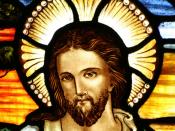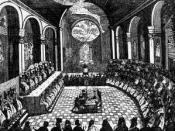1) What are the three church councils and what are the reasons and results of each:
The first church council is called Nicaea. The council of Nicaea met in 325 AD at the call of Emperor Constantine the Great. The meeting was held to settle the theological controversy over the nature of Jesus Christ. The end result was the Nicene Creed written by the council, which was a precise statement on the beliefs. The second council was called the Council of Trent. This council is responsible for what is now called the Catholic Reformation. Its purpose was to bring the Protestants and Catholics together again, and to state clearly the principal teachings of the Catholic Church. The council of Trent failed to reunite the followers of Luther, Calvin, or Henry VIII with the Catholic Church. However the Council of Trent had many positive outcomes: it guided the church into the Vatican II in the 1960's, and new orders were founded to undertake the reforms.
The third council is called the Vatican II council. The church was in need of for renewal and one person, Pope John XXIII brought new light and hope into the church by guiding it into the Vatican II. He saw that the church was no longer a European institution but a worldwide community and that it needed to respond to technology, politics, economics, and science. Among other purposes, the council's aim was to promote the unity of all Christians and to study how the church could better understand and influence the rapidly changing world. The Vatican II renewed the church and made it more relevant to the modern times. It allowed a more personal involvement the church. Even today, there is still a debate whether Vatican II added good to the church or took...

